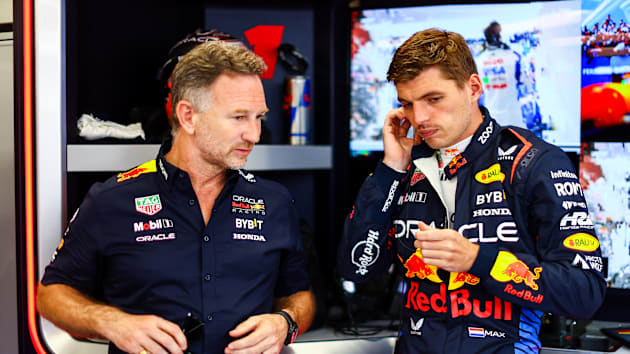
Technical
TECH WEEKLY: The 3 most significant technical developments of the 2024 season so far

Technical Contributors
Mark Hughes and Giorgio PiolaShare

In what has been a half-season of fascinating changes in the competitive order among the top teams, we take a look at three significant developments.
McLaren’s bodywork
Introduced: Miami Grand Prix
McLaren began the season with only the third-fastest car, seeming to have lost out a little over the winter to Red Bull and Ferrari. But they did so in the full knowledge that a major upgrade (which was set for Imola but made its debut on Lando Norris’s car one race early, in Miami) was coming, which was expected to bring a major uplift in performance.
The changes centred around a floor redesign which enhanced the downforce at the front of the car, particularly in low-speed corners. To facilitate the energising of the aerodynamics around the leading edge of the floor, the whole lower front of the sidepod had been hollowed out – this made possible by a new wider, shallower radiator intake with an enhanced lip above it.
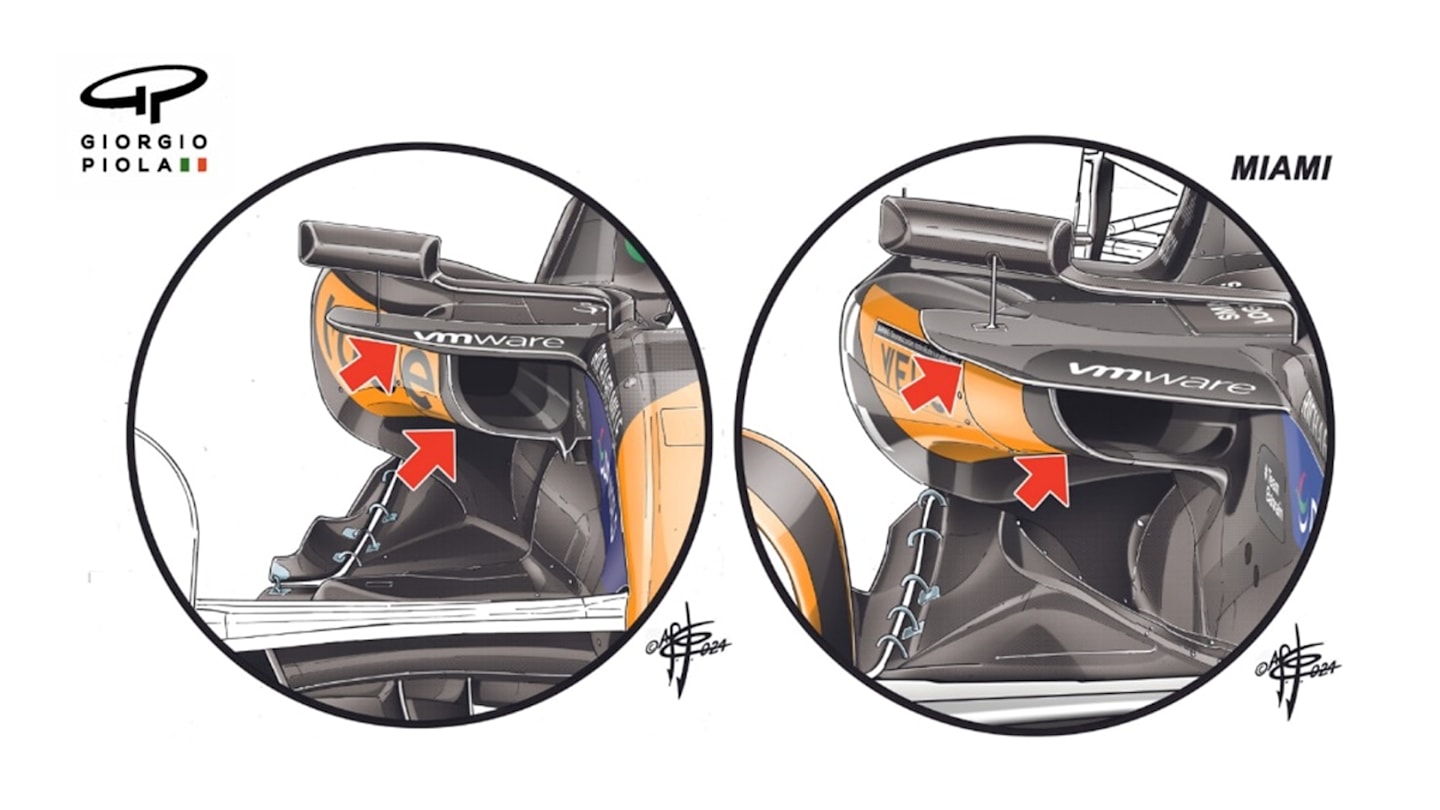
McLaren's wider but shallower radiator inlet allowed a more favourable bodywork shaping directly behind
The radiators and cooling components had been re-sited to achieve this, which also allowed a greater in-cut on the coke bottle section of lower bodywork at the rear.
It transformed the car’s ability to generate and retain good downforce on the front axle through low/medium-speed corners while still retaining its good high-speed balance.
TECH WEEKLY: McLaren's key front wing change that looks to maintain the pressure on Red Bull
Since that upgrade – which yielded Norris’s maiden Grand Prix victory on its first ever run-out – the MCL38 has been arguably F1’s fastest car, a contender on all types of track.
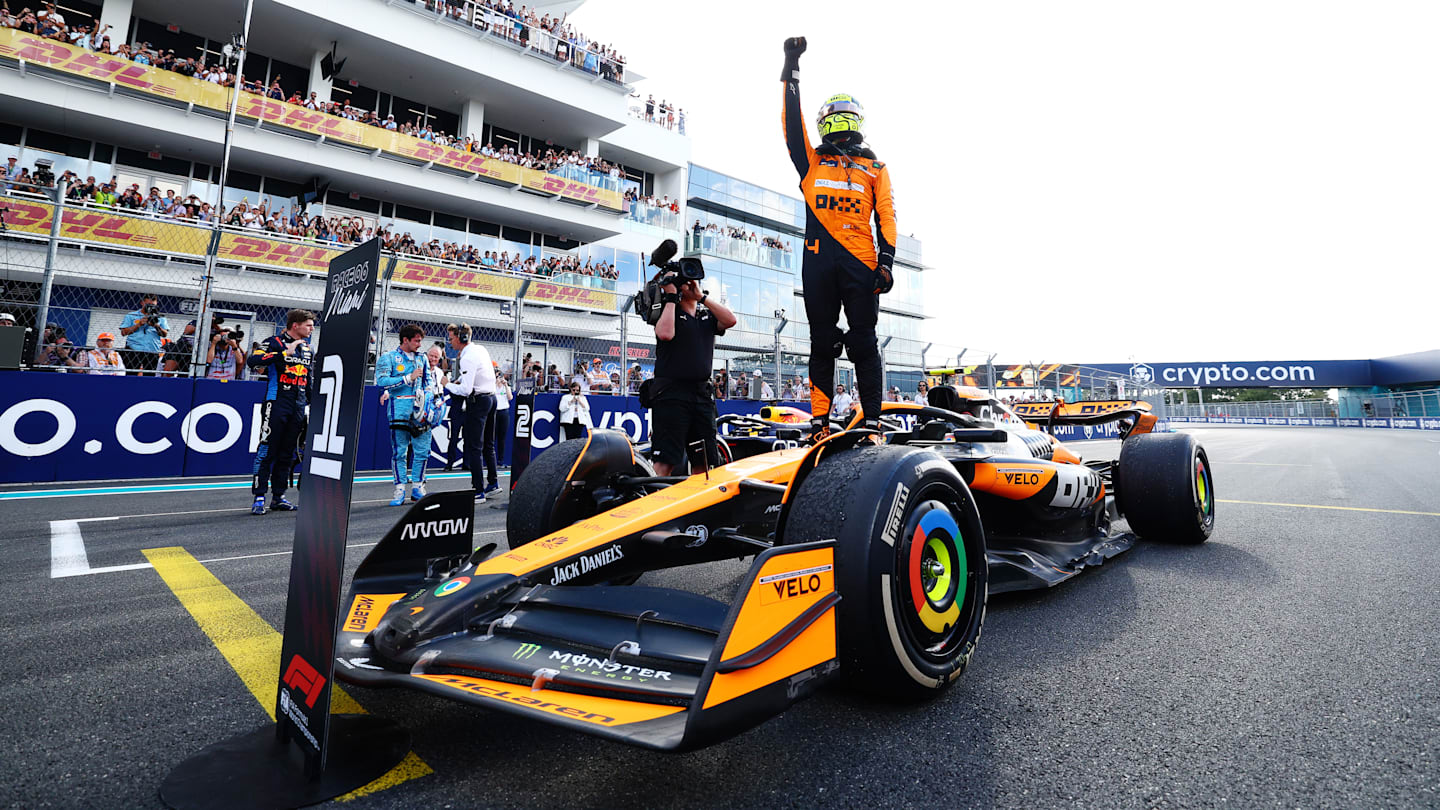
Norris took the upgraded MCL38 to McLaren's first Grand Prix win since 2021
Mercedes’ front wing
Introduced: Monaco Grand Prix
From a troubled beginning, the Mercedes W15 was suddenly switched on with a key change to its front wing. This was introduced on George Russell’s car in Monaco and was on both cars by the following race in Montreal, where Russell took a great pole position and led much of the race. The W15 has since taken victory in three of the last four races.
TECH WEEKLY: How crucial updates from McLaren and Mercedes brought the 2024 season to life
The W15’s original front wing raised eyebrows at the car’s introduction thanks to its ‘legality wire’ (it was actually carbon fibre) connecting the top element to the nose (as required by the regulations). This allowed a significant volume between the nose and the main part of the top element for airflow to be fed to the underfloor.
)
The wing used by Russell in Monaco and the original, used by Hamilton that weekend. The top flap was no longer half-width with a legality tube connecting it to the nose. There was a more conventional top element, shallower in the outboard end, but stretching across the whole span. The other three elements were reprofiled and there was a less sudden upsweep as they rose up to meet the nose. The underside of the bottom element had a different profile beneath the nose, narrowing the gap to the underfloor
It was an ingenious interpretation of the regulations – but in practice it didn’t work. The car was blighted by understeer at slow speeds, but when the wing angle or area was increased to counter this, the car became too nervous at the rear.
The new wing was more conventional in appearance. Not only did this reduce the switch-like traits, but the more conventional span of the top flap would ensure that any beneficial flexibility at speed would have a greater effect.
Which brings us to the third significant area of innovation…
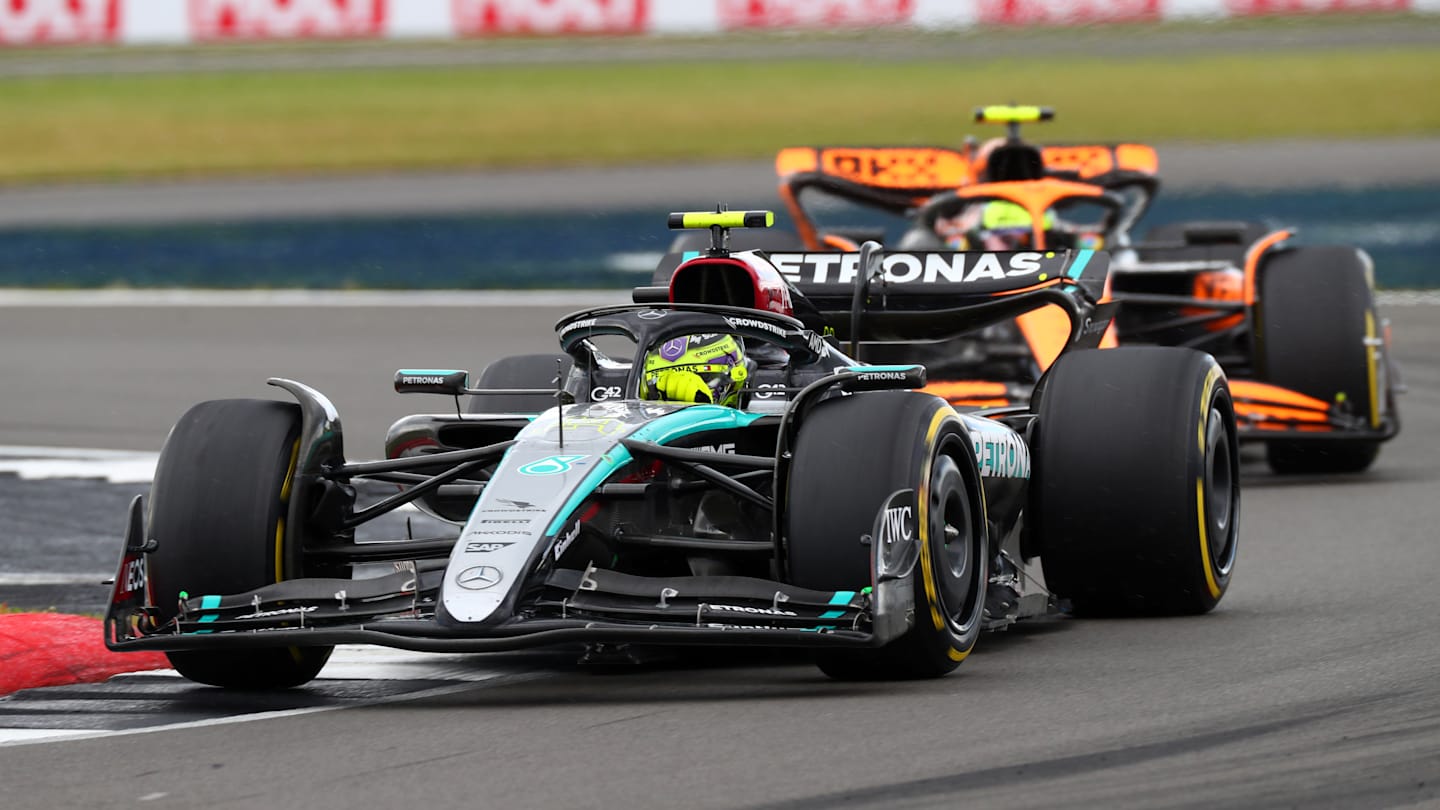
The re-designed front wing helped Mercedes become contenders again
The invisible developments
Front wing flexibility has become an increasing area of focus this season. There has always been a to-and-fro process between teams and governing body on how much wings can flex. But it has acquired increased importance this year.
Previously, teams were concerned with reducing the car’s drag on the straights. But with the difficulty with this generation of cars in achieving a consistent balance between low and high speed, the benefit of having a wing which by flexing can offset some of the increased effectiveness it achieves as it gets closer to the ground at high speed has become more valuable.
TECH WEEKLY: How McLaren’s major Miami upgrade helped Norris secure his debut F1 win
The part of the wing’s span at which the greatest flexibility is achieved can be varied not only by the make-up of its carbon fibre but also by its fixings. We have seen Red Bull try front wings with various locations for the flap adjusters – inboard or outboard. This would vary the part of the flap which most flexed at high speed, giving either greater outwash of the air around the wheels or more airflow to the underfloor.
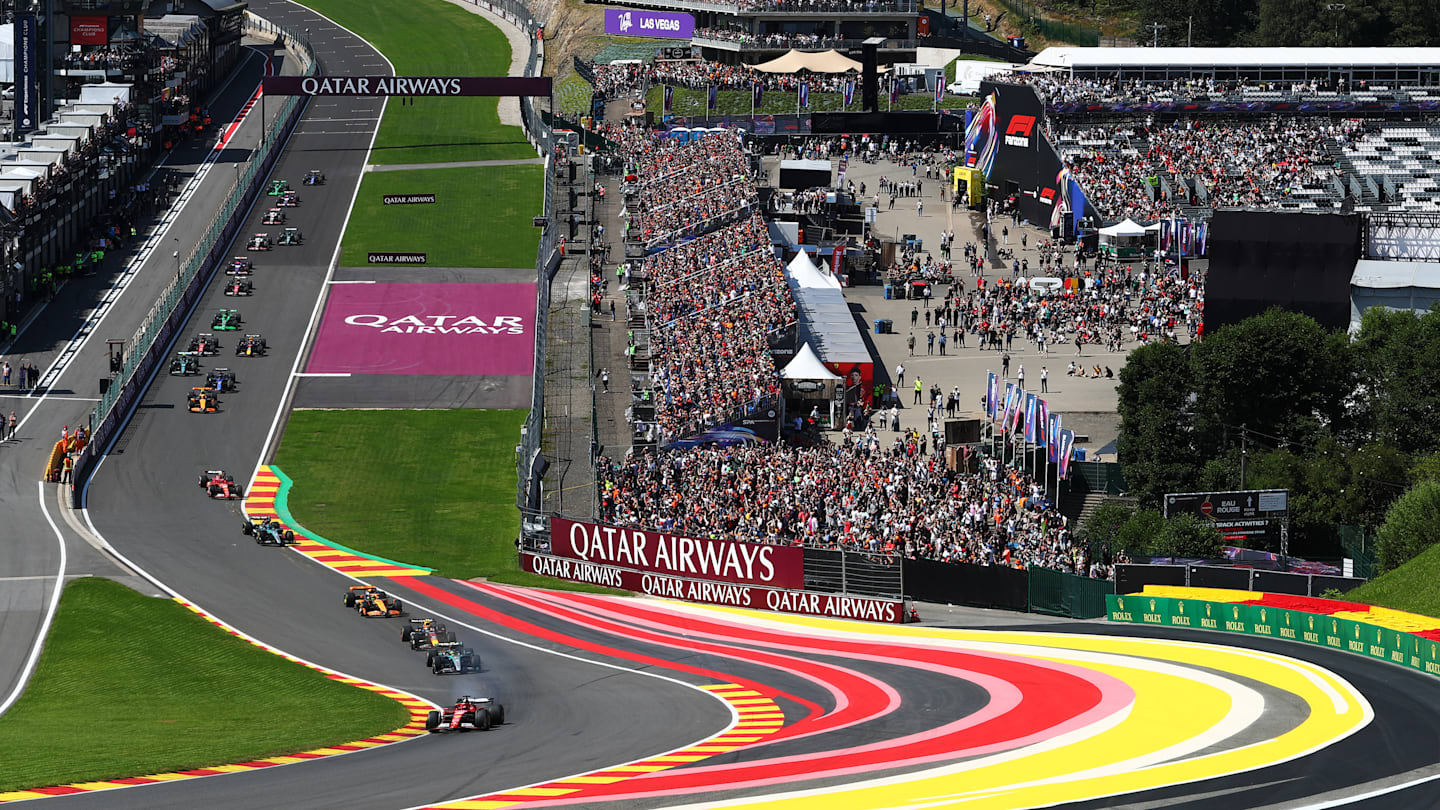
Asymmetric braking could potentially be a useful tool to combat the low-speed understeer and high-speed oversteer that affects this current generation of ‘ground effect’ cars – but has now been outlawed by the FIA
Another possible area of development – one which the FIA has closed off during the summer break – is that of asymmetrical braking. We don’t know which, if any, teams have been using this or if the clarification has been made to close off possible future developments.
POLL: What has been the best Grand Prix of the 2024 F1 season so far?
But from Zandvoort (the next race), the relevant article of the technical regulations states (new wording in italics): “The braking system must be designed so that, within each circuit, the forces applied to the brake pads are of the same magnitude and act as opposing pairs on a given brake disc. Any system or mechanism that can systematically or intentionally produce asymmetric braking torques for a given axle is prohibited.”
Asymmetric braking would be a very useful tool in addressing the conflict between the low-speed understeer and high-speed oversteer these cars tend to suffer from. Having greater braking force on the outside rear than on the inside would help pivot the car, reducing the understeer.
YOU MIGHT ALSO LIKE
News Horner explains how Verstappen has reacted to Red Bull struggles as he vows team will 'come back'
News Ferrari announce organisational changes as former Mercedes man Loic Serra gets set to start work
Feature THE GUENTHER STEINER COLUMN: Why I’m backing Binotto in his new role and why Bearman faces a reality check
News ‘I’m happy to disappoint people’ – Norris reflects on the crucial ways he has changed since first entering F1

